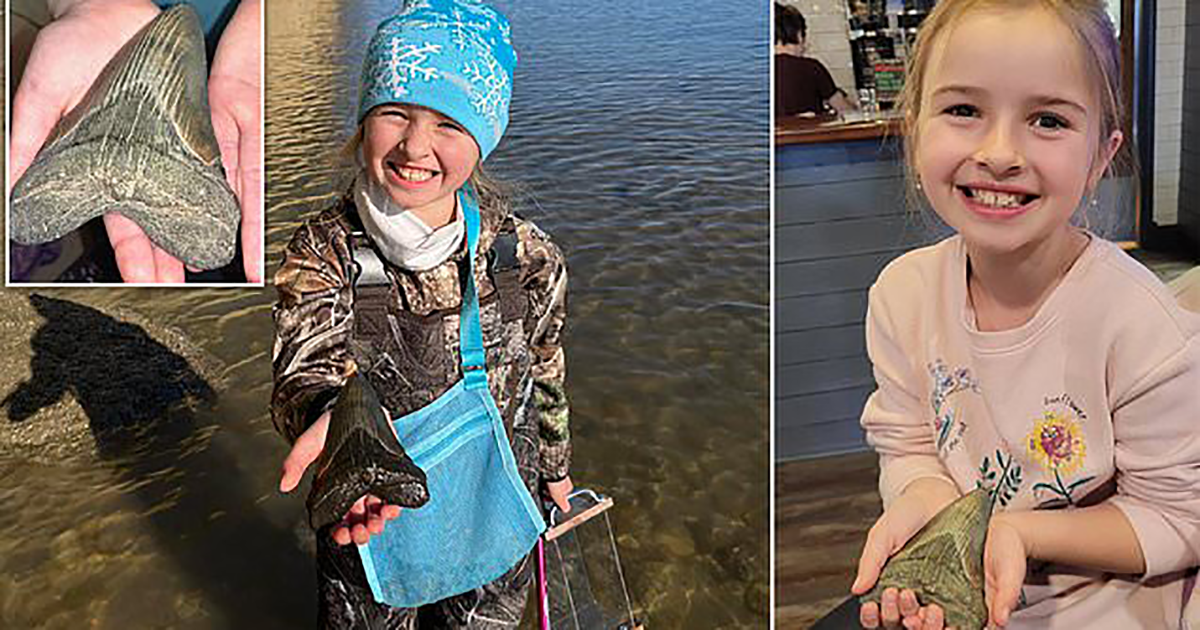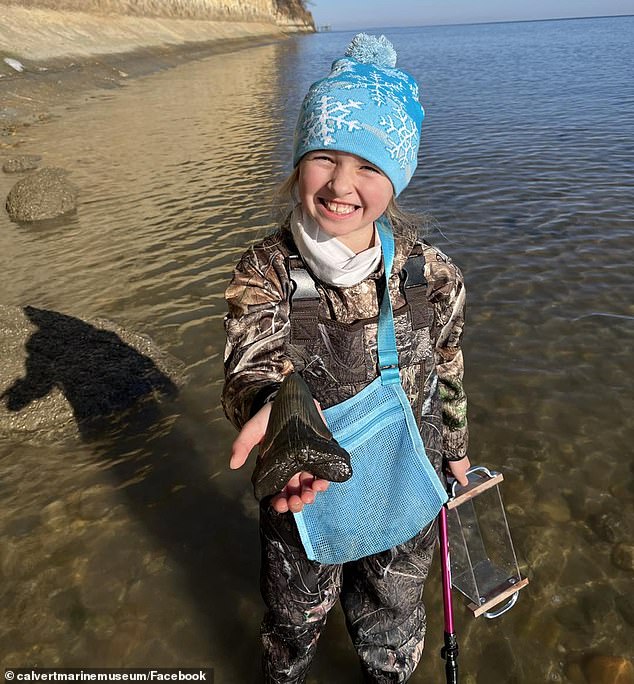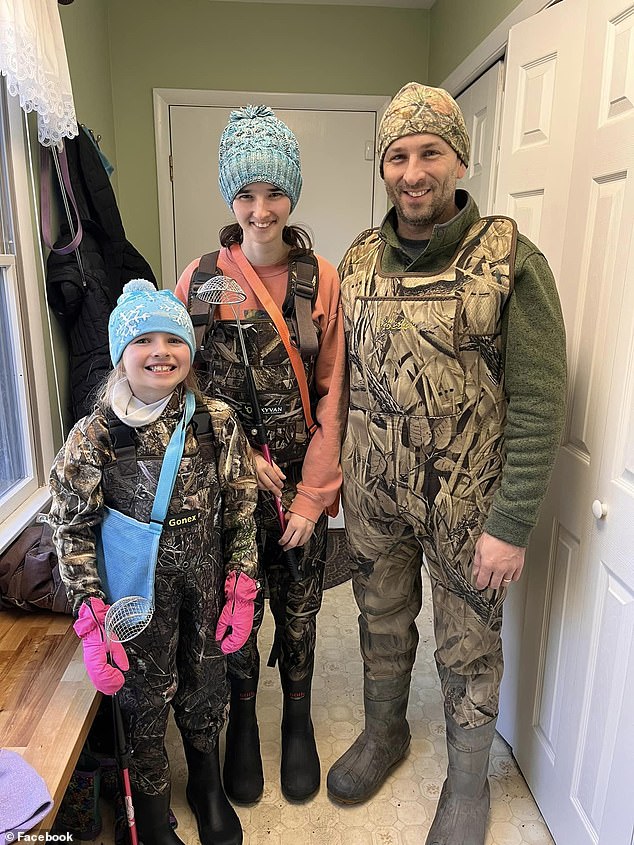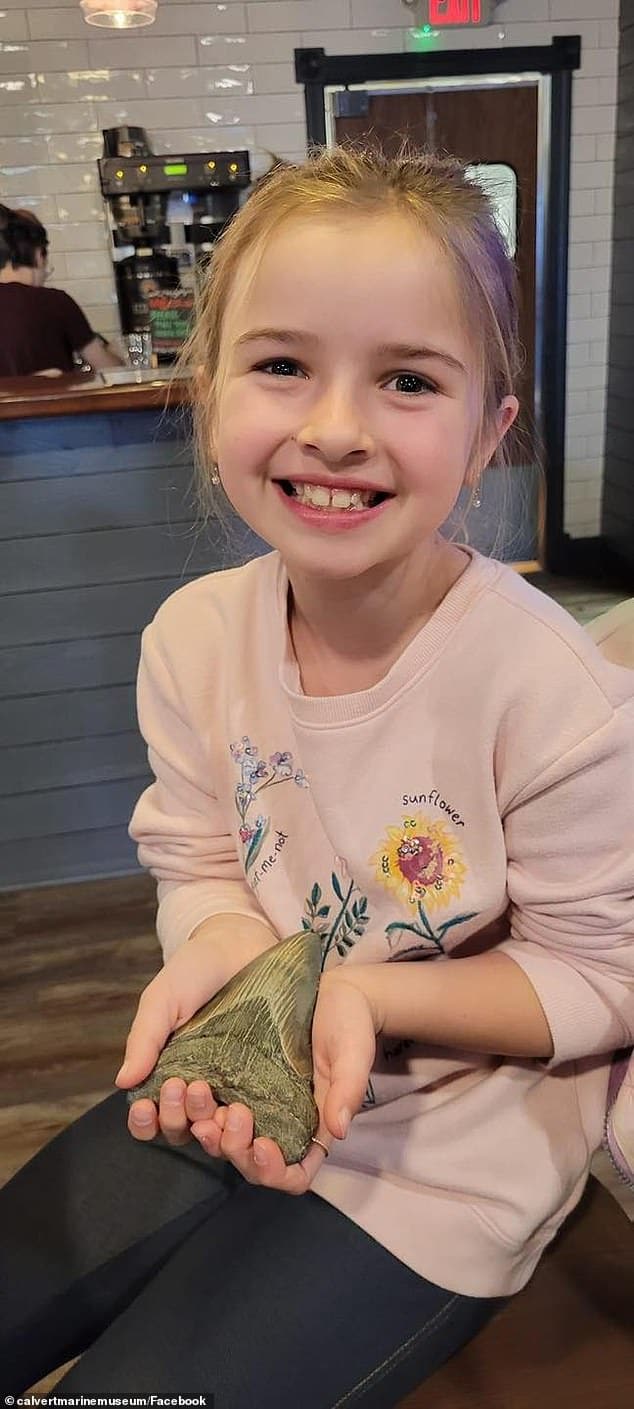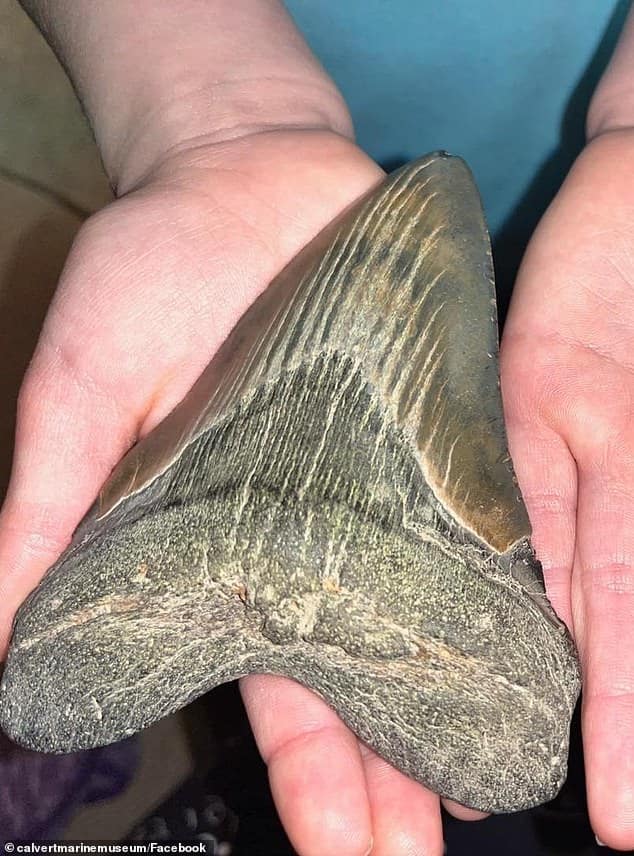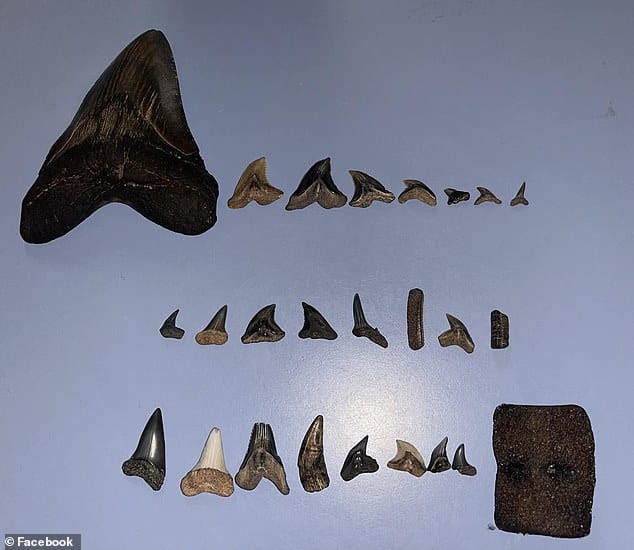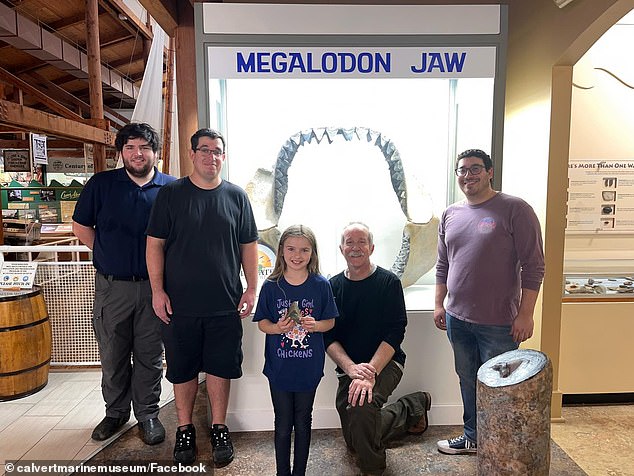When a young girl was looking for fossils on a beach in Maryland, she found a large megalodon tooth. This was a “once-in-a-lifetime” gift for Christmas.
Molly Sampson, who is 9 years old, asked her mother, Alicia Sampson, for a pair of insulated waders so she could stay warm while searching in the water of the Chesapeake Bay. It was 10 degrees outside.
Sampson said that her daughter told her in the morning,
I was going to look for Meg.
The artifact of a 50-foot-long megalodon that lived more than 2.6 million years ago, is bigger than her hand.
Sampson said that her daughter found more than 400 teeth, but the one pulled out of the water last month that was five inches long, was the biggest.
Sampson showed a bunch of pictures of Molly holding her find and smiling from ear to ear.
My husband has looked for them his entire life! We’ve always lived close to the bay so all of our kids have done it since they were little,
said.
The main thing that Molly really wanted was insulated chest waders so that she could go out in the water when it was cold and look for sharks’ teeth.
Sampson said she wasn’t there for the hunt, but when Molly, her other daughter Natalie, 17, and her husband Bruce came home, they told her all about what they had found.
Molly said she wanted to start screaming when she found the tooth because she was so excited!
she said.
I wasn’t there because it was too cold for me, but my husband said she started shrieking, saying, ‘look what I found!’
This is something she’s always wanted to find.
Molly is a super shy kid, so she isn’t one to like the spotlight, but she also knows it’s more about this amazing tooth.
Since she could walk, the little girl has been looking for sharks on the beach, but she always keeps an eye out for “the Meg.”
Sampson said this is the biggest megalodon Molly has found so far.
Molly has found more than 400 teeth, and they are all different.
Molly told her mom that she hopes other kids will see how fun it is to go on adventures and do it themselves.
The Sampsons also wrote about what they had found on Facebook.
I’m pretty sure Molly is feeling like this is the best Christmas ever,
her mom wrote in the post.
… This tooth was in the water, so thanks to the waders, she got the best part of her present!
The family also showed a picture of the shark teeth they all found on Christmas Day. There were 22 of them.
The tooth was brought to the Calvert Marine Museum, which confirmed that it was a fossil.
The museum says that Molly brought the tooth to their paleontology department, but she will be able to look at the find whenever she wants.
Scientists have tried for more than a hundred years to figure out what the megalodon, the biggest shark that ever lived, looked like.
Scientists say they still don’t know what the legendary creature looked like when it swam the seas about 15 to 3.6 million years ago.
In a new study, experts say that all of the body shapes that have been suggested for the huge megalodon are still “in the realm of speculation.”
But scientists hope that one day a complete megalodon skeleton, which they call the “ultimate treasure,” will be found. This would show for sure what the animal looked like.
The study may appear to be a step backward in science, but the continued mystery makes paleontology, the study of prehistoric life, a fascinating and exciting scientific field,
said study author Kenshu Shimada at DePaul University in Chicago.
The fact that we still don’t know exactly how O. megalodon looked keeps our imagination going.
This is exactly why the science of paleontology continues to be an exciting academic field. We’ll continue looking for more clues in the fossil record.
The megalodon, whose name means “big tooth,” is usually shown as a huge, scary shark in books and movies like “The Meg,” which came out in 2018.
The megalodon (officially called Otodus megalodon) is only known from fossils of its teeth and vertebrae. No one doubts that it existed or was huge.
Studies show that, based on this evidence, they were at least 50 feet long and could have been as long as 65 feet.
Based on tooth remains, a Swiss scientist named Louis Agassiz gave this shark its first scientific name, Carcharodon megalodon, in 1843.
But after more than 150 years, more fossils, such as a full skeleton, have not been found to prove that they were bodies.


